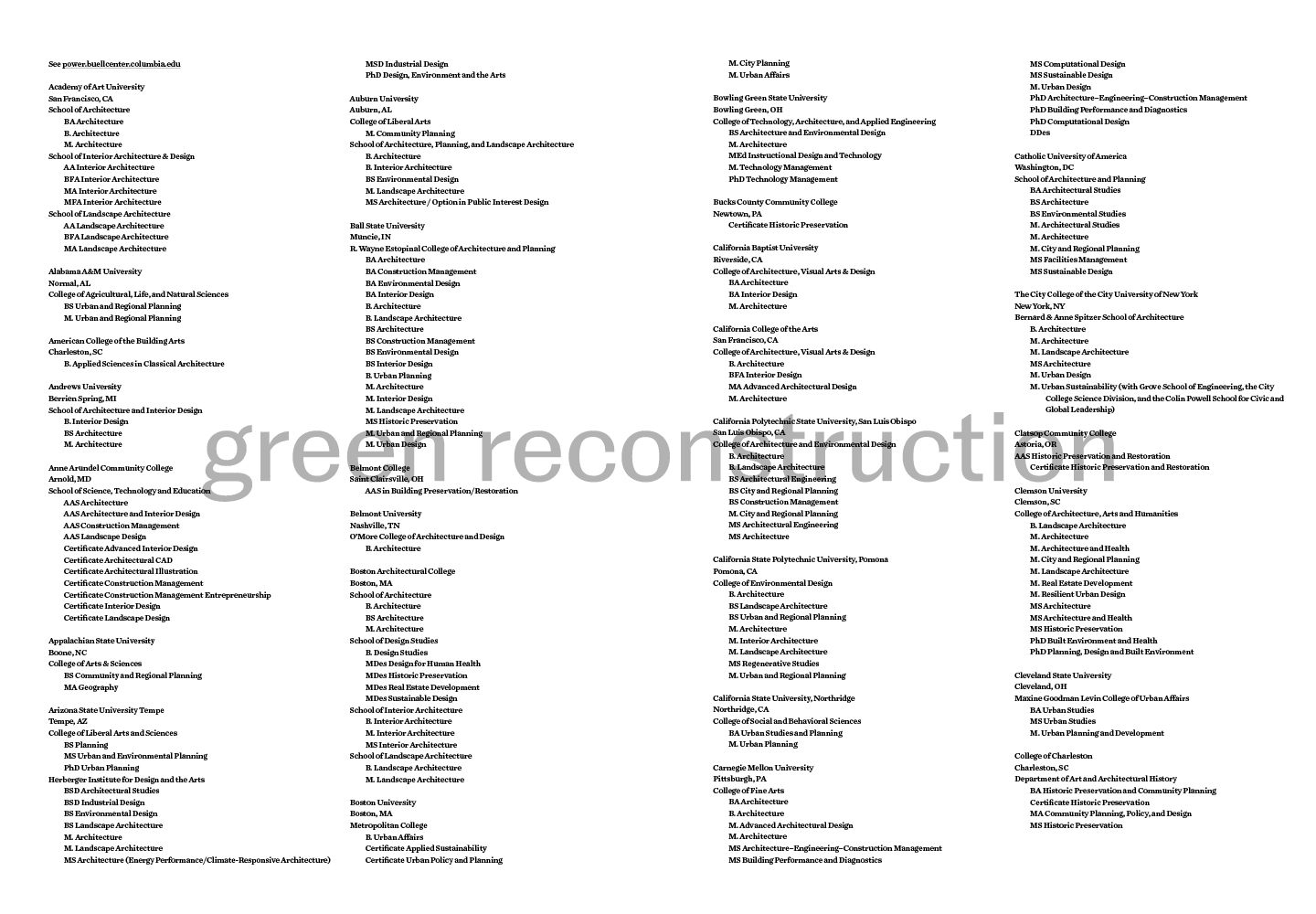Columbia University GSAPP
1172 Amsterdam Avenue, 300E Buell Hall
New York, NY 10027
United States
buellcenter@columbia.edu
As a part of its project, “Power: Infrastructure in America,” Columbia University’s Temple Hoyne Buell Center for the Study of American Architecture releases Green Reconstruction: A Curricular Toolkit for the Built Environment.
Change is learned. On the streets and in the public sphere, imagination, knowledge, and know-how go hand in hand. At a time of mounting social and ecological turmoil, planning and designing a just, equitable built environment requires professional focus anchored in intellectual ambition. Rote allegiances to orthodoxy must reorient toward new realities. Professional education, in short, must be rethought. For the arts and sciences of the built environment, change therefore begins in the classroom, as a shared learning that rebuilds the imagination from the ground up: Green Reconstruction.
Green Reconstruction is an outline, an open work, for the repair of a world ravaged by three intersecting crises—of mutual care, of racial oppression, and of climate, all intersecting in turn with economic inequality—that moves along two axes, the Green axis of ecological transformation, and the gilded axis of material redistribution, or Reconstruction. The Green axis refers to the ecological and economic ambitions of proposals like the Green New Deal and its counterparts around the world, all of which continue to merit serious academic and public attention. The second axis recovers the unfinished project of what W. E. B. Du Bois called, in Black Reconstruction in America (1935), “abolition democracy,” and with it, the political and economic restructuring of a system for which the expropriation of Black and Brown lives is business as usual, as racial and ecological apartheid remain global norms.
More specifically for the arts and sciences of the built environment, Green Reconstruction names a new curriculum, a change of course. By this we recognize the central role of professional, academically sanctioned expertise in constructing and maintaining a status quo, including a status quo nominally devoted to perpetual innovation. To mean anything and to change anything, Green Reconstruction must speak from below; but to endure, it must find its own designers, planners, and technicians. Such figures, both scholars and practitioners, link the powers below with the powers above, with the aim of supplying technical equipment with which to make things change. We have therefore sought to outline pedagogical frameworks and courses of action for others to adopt and make their own: to start new conversations, and to bring to them the deepest knowledge and the most profound imagination.
Released digitally and in print, Green Reconstruction: A Curricular Toolkit for the Built Environment is available for no cost to anyone interested in the relationship between curricular and societal change. The PDF is available on the Buell Center’s “Power: Infrastructure in America” website, and the print edition, for which limited quantities are available, can be requested here (requests are no longer possible after March 31, 2022).


